#React Native UI Libraries
Explore tagged Tumblr posts
Text
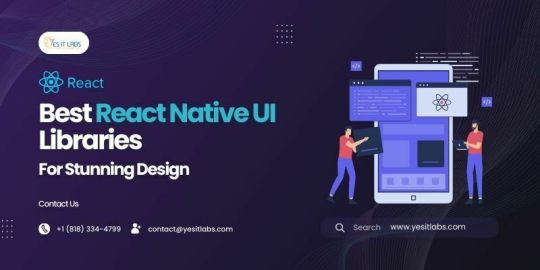
Best React Native UI Libraries for Stunning Design
Discover the top React Native UI libraries that can transform your app's design into a stunning masterpiece. Elevate your user interface with these exceptional tools.
0 notes
Text
The Introduction to gluestack-UI – Build Fast with React, Next.js & React Native
Create beautiful, scalable apps with Gluestack – the best UI library for React, React Native & Next.js. Styled with Tailwind, optimized for both mobile & web App.
#react native ui component#react component library#react native ui library#react native library#gluestack
0 notes
Text
Component Libraries: Should You Build Your Own or Use a Prebuilt One?

Component libraries are a vital tool in web application development in maintaining uniform design, shortening the time taken to develop web applications and improving reusability of the code. Some developers find this dilemma; should they create a component library or use an existing one? In addition, they help reduce the struggle while building well-designed and interactive websites because of the availability of animation-oriented UIs such as Accentricity UI among others. Now, let’s get more to the point in order to help you find the right way.
What is a Component Library?
Component libraries are collections of reusable UI elements such as buttons, forms, modals, and more— and are intended to reuse the components across several projects. Such libraries not only guarantee a consistent look of an application but also save time and costs during its implementation because the elements have been already coded. So, there's no need to build components from scratch.
Prebuilt Component Libraries

Prebuilt Component Libraries
Prebuilt component libraries are the ready-made collections of different UI components that are specifically designed and optimized for common use cases that developers can face during development. Some well-known examples include:
Material-UI (MUI):
A library based on React and it follows Google's Material-UI design, MUI allows a comprehensive set of components customization.
Ant Design:
It's an UI design system framework for enterprise-level products, ant design offers built-in themes and a rich set of UI components.
Bootstrap:
It's an widely-used CSS framework that provides basic components and a responsive grid system.
Pros of Prebuilt Libraries :
Rapid Development: Prebuilt libraries save a lot of time of the developers by providing pre-designed reusable components that you can quickly integrate into your project.
Standardized Design: They help ensure a consistent user experience across different screens and features.
Community Support: Many prebuilt libraries come with robust community support, providing a wealth of tutorials, plugins, and enhancements.
Cons of Prebuilt Libraries
Limited Customization: Customizing components to fit your unique design can sometimes be difficult, leading to constraints on flexibility.
Performance Overhead: Many prebuilt libraries come with extra features you may not need, which can bloat your codebase.

Pros And Cons of Prebuilt Libraries
Animation-Centric Libraries: Bringing UIs to Life
In recent years, a new category of libraries has emerged, specifically focused on providing built-in animations and smooth UI transitions. These libraries not only offer pre-designed components but also emphasize adding dynamic, interactive features to web applications.
Here are some popular examples of animation-focused libraries:
Lottie
Category: Animation Integration Library

Lottie:The industry standard for motion design
What it Offers: Lottie allows you to render animations created in Figma or Adobe After Effects as JSON files using the built-in plugins. These animations are then rendered natively on the web, offering high-quality motion without a heavy performance impact.
Why It’s Useful: Lottie is perfect for apps or websites requiring rich, scalable animations that are lightweight. It’s commonly used for logos, loading animations, and subtle UI effects. Unlike other component libraries, it focuses purely on bringing visual design elements from tools like Figma & After Effects into the web environment.
Accentricity UI
Category: Hybrid Component and Animation Library
What it Offers:
Accentricity UI combines traditional UI components with built-in support for smooth animations and transitions. It offers a wide range of components like buttons, forms, modals, and navigation menus, but with an added layer of predefined animations, making it easier to create interactive, dynamic interfaces.
In addition to these standard components, Accentricity UI provides responsive behaviors and subtle animation effects like hover states, fade-ins, and sliding transitions that enhance user engagement. The library's components are fully customizable, allowing developers to easily adjust animation timings, easing functions, and durations to match the look and feel of their brand, ensuring both visual appeal and performance across devices.
Why It’s Useful:
Think about it, what would be easy for a dev? Making a custom component with tons of animation which the dev has to write from scratch and polish it before the deadline or use a library, where the dev can make use of the library with the built-in support to combine the custom designed elements with smooth animations and transitions offered by the library.
It’s particularly helpful for developers who want the convenience of a prebuilt library but need polished, built-in animations to enhance user experience without writing complex animation code from scratch.
Framer Motion
Category: Animation-focused Component Library (React)

Framer Motion
What it Offers:
Framer Motion is a powerful library for React that allows you to create fluid animations and micro interactions with minimal effort. It supports interactive features like drag, scroll, and spring-based animations, which makes it ideal for interactive & highly animated UIs. It also provides easy-to-use APIs for gesture-based animations and layout transitions, offering developers extensive control over complex animations while maintaining simplicity in implementation.
Why It’s Useful:
Framer Motion combines the simplicity of component libraries with the flexibility of advanced animation frameworks, making it easy to enhance user interfaces with dynamic visual effects. It’s a great choice for React developers who want to integrate animation without compromising performance or adding significant overhead. With its built-in optimizations for smooth rendering, Framer Motion ensures high-quality animations that enhance both usability and visual appeal.
Should You Use Prebuilt Animation Libraries?
The role of animations is really important in web applications to enhance the UX(user experience), by making interfaces feel more fluid and interactive makes user's remember the website due to its great experience. Since users are constantly getting used to smooth effects, micro-interaction and dynamic feedback, animations are no longer viewed as a good to have feature but are rather considered as a must have feature. Prebuilt animation libraries like Framer Motion and GSAP (GreenSock Animation Platform) simplify this process by providing powerful, flexible tools that allow developers to integrate complex animations without having to manually manage every aspect of motion or dive deep into animation theory.
Advantages of Animation-Centric Libraries

Advantages of Animation-Centric Libraries
Ease of Use
Prebuilt animation libraries abstract away the complexities of coding animations from scratch. Without manually writing keyframes, easing functions, or browser-optimized transitions, developers can simply use predefined APIs to implement fluid animations. This drastically reduces development time, as many animation details are handled by the library, letting developers focus on building features and interactions rather than tweaking animations for performance or cross-browser compatibility. For example, with a few lines of code, animations can be applied to any UI element, making the development process much more efficient.
Advanced Features
Many animation libraries offer advanced features that go far beyond basic transitions like fade-ins and slide animations. These include timeline control, scroll-triggered animations, physics-based interactions, and even 3D transformations. For instance, timeline control allows developers to create synchronized sequences of animations, which can be used to create smooth, coordinated interactions across multiple elements. Scroll-based animations enhance user engagement by triggering effects as the user scrolls, perfect for parallax websites or content reveal effects. Physics-based animations, such as spring-based drag-and-drop or object bouncing, add natural, realistic movement to interactive elements, elevating the overall experience. Additionally, 3D transformations provide extensive control over how objects rotate, scale, or move in three-dimensional space, something that is cumbersome to achieve with native CSS alone.
See What Happens Next
#webdevelopement#werbooz#own website#build vs prebuilt component library#custom UI components#prebuilt UI libraries#web development#Material-UI#Ant Design#Bootstrap#Framer Motion#Accentricity UI#animation libraries#best UI libraries 2024#component library pros and cons#web app development#UI design optimization#web performance#web development trends
2 notes
·
View notes
Note
for both: 4, 10, 11, 19 :)
i'm assuming this is the meta oc questions post you're asking for! so here you go :> if you meant one of the other like two ask meme things i've reblogged yesterday, lmk, i'll edit!
4. Why did you give them the name they have? What is the in-universe reason for their name?
Willow got her name from a Taylor Swift-song, simply because her concept was sex worker in Amsterdam's red light district, and I thought it'd be so funny if her name was Willow because "Life was a willow and it bent right to your wind", and she's bendy in any direction her clientele wanted her. Her middle name was recently added, because I watched Barbie (2023) too often, and her last name is Turing, because sometimes you have to hide queer history in character names. In universe, her mom liked Willow as a name, and her middle name came from her grandmother. Clíodhna was named for the queen of the Banshees in Irish mythology. Her backstory and lore are heavily based in Shakespeare, Celtic mythology, and a little in Changeling the Dreaming, so when @kentuckycaverats suggested the name, I stuck with it. Clíodhna is plagued by the ghosts of her past, after all. Sure, they're not wraiths or bean sidhe, but they basically are just that to her. Additionally, her last name is Ó Neill, which is rooted in Celtic migration and history. What is a Scot if not just an Irish Dál Riata settler? And the Ui Neill clan was one of their allies, as well as one of the most prominent families back in those days. In universe, she was born as Kenna MacNeil to Irish immigrants. She was born in Scotland, but after her aging was stopped due to her Sire ghouling her, Kenna MacNeil has been declared dead. When her Sire moved her to Ireland to basically function as a spy, Irishifying her name to blend in better made sense... Besides, Kenna MacNeil had been dead for a long time. The court in Derry are Irish nationalists, her English or Scottish name would do worse in Ireland than Clíodhna would.
10. What is your favorite trait regarding your oc?
Willow is so fierce in how much she loves. She has a couple of people she'd quite literally do anything for, even if it puts herself in harm's way. My favourite Clíodhna-trait is something that happens when I play her. She has been raised in Scotland, but over the last century she's been forced into an RP English accent. As her emotional state changes, so does her accent. If she gets agitated, stressed, or scared, her accent will shift from RP English to her native accent. It's a lot of fun to flex my accent library on my friends /lh
11. What is your least favorite trait regarding your oc?
Willow's too nervous for her own good. Some shit has happened, and where she once was a stereotypical confident Toreador with the entire world at her disposal, she's now just chronically afraid of everything and losing touch with reality and she has no idea who she is anymore. It's a little bit stressful. She'll grow out of it <3 Clíodhna I haven't had the chance to play much, yet, but I have a sinking feeling I'm going to hate what she's like with her Sire. But hey, that's what being blood bound to a Ventrue will do to you, I suppose.
19. How might your oc react to finding out you are the one responsible for their life?
Willow would probably find it very weird to know that I'm literally chronically talking about her on the internet to the little gay people in my phone. But also, maybe she'd get some strength out of this? Who knows. She'd probably want nothing to do with me and hope that I never visit Amsterdam ever. Clíodhna? She sees ghosts all the time. If I tell her I'm responsible for her life, she'd probably consider me another one of the voices she hears sometimes that say things she doesn't quite understand. She might be a bit confused because I'm not her father, ex partner, or one of the two people she killed upon embrace, but it would be nothing out of her ordinary.
6 notes
·
View notes
Text
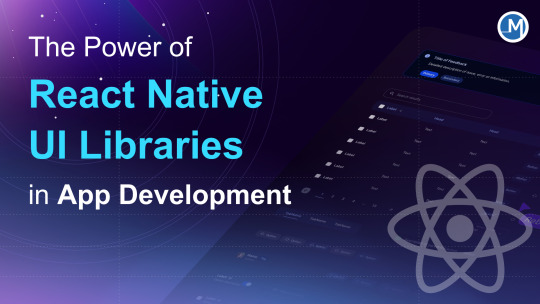

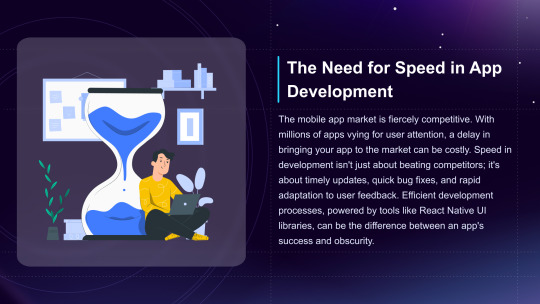
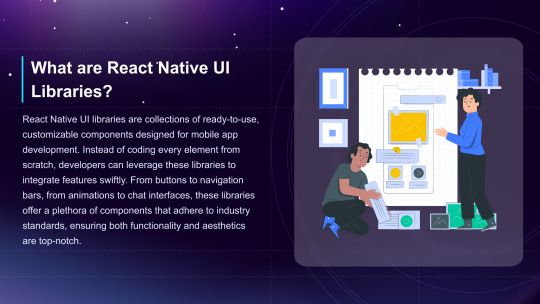
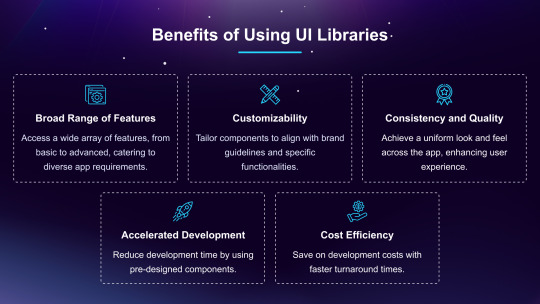



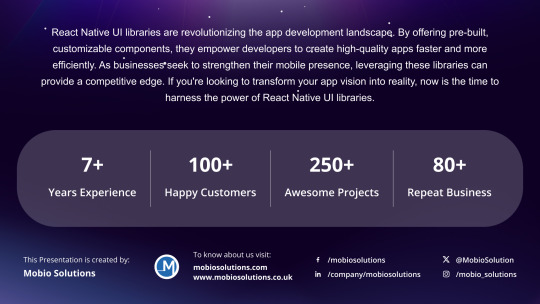
Dive into the world of efficient app development with our latest piece on 'The Power of React Native UI Libraries!' Discover how these libraries supercharge the app development process, offering versatile components, seamless integration, and consistent updates that keep your app ahead of the curve. 📱
2 notes
·
View notes
Text
How Can Companies Optimize ROI by Converting Android Apps to iOS (or Vice Versa)?
Optimize ROI by Converting Android Apps to iOS
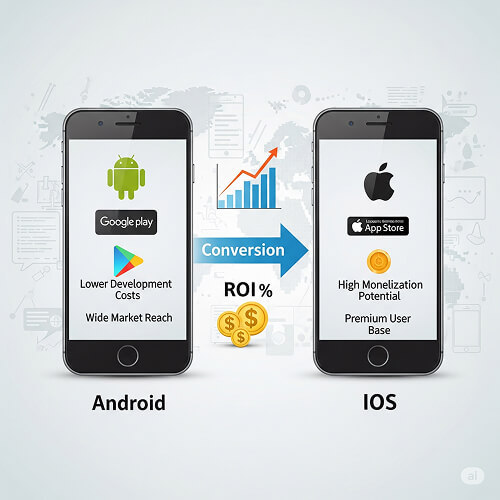
Introduction
In today’s mobile-first landscape, companies aiming to maximize their mobile app ROI must consider platform expansion. With Android dominating in user volume and iOS leading in revenue generation, converting your app from Android to iOS (or vice versa) can be a strategic move to reach a broader audience and boost profitability. This blog explores how app conversion can be a growth catalyst, helping businesses lower acquisition costs and increase user engagement across platforms.
Understanding Android to iOS App Conversion (or Vice Versa)
App conversion refers to the process of adapting an existing mobile application to operate on a different platform. Whether moving from Android to iOS or the reverse, this process involves more than just copying code. It includes reworking the UI/UX, adapting to platform-specific APIs, and ensuring functional parity across devices. Successful app conversion demands expertise in both Android and iOS app development to maintain performance and user satisfaction.
Top Reasons to Convert Android Apps to iOS (or Vice Versa)
Reach a wider audience: Tap into new user segments by expanding your presence to another platform.
Increase revenue potential: iOS users typically have higher lifetime value, while Android's larger user base can fuel ad-driven revenue models.
Improve brand presence: Being available on both platforms builds credibility and trust with users.
Maximize previous investments: Reusing assets and backend systems speeds up time-to-market and reduces development costs.
How App Conversion Improves ROI
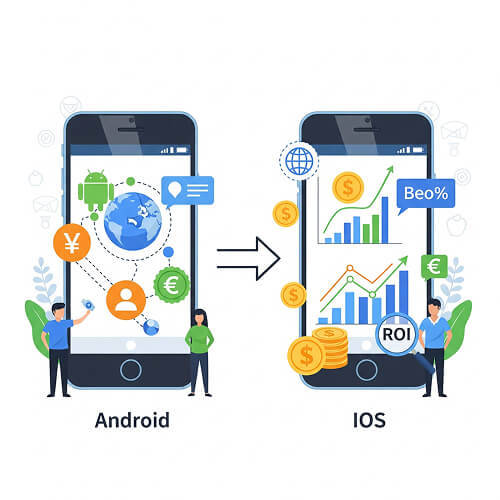
Converting your app allows you to scale without starting from scratch, which significantly lowers development costs. The ability to reach more users boosts installs, engagement, and revenue. Moreover, a cross-platform presence strengthens brand authority and opens doors to new monetization opportunities, like in-app purchases or subscriptions, ultimately maximizing return on investment.
Key Challenges in Mobile App Platform Conversion
UI/UX differences: iOS and Android have distinct design languages (Material vs. Human Interface Guidelines).
Technical variations: Differences in programming languages (Java/Kotlin for Android vs. Swift/Objective-C for iOS).
Third-party integration compatibility: Not all libraries and SDKs work identically across platforms.
Testing requirements: Each platform has its own device ecosystem and app store policies.
Steps to Successfully Convert Your Mobile App
Audit existing app code and features
Choose the right development approach (native or cross-platform)
Redesign UI/UX to fit the new platform standards
Adapt backend APIs and third-party services
Test extensively across devices and OS versions
Deploy to the relevant app store with optimized listings
Tools & Technologies for App Conversion
Flutter: Ideal for creating a single codebase for both platforms
Kotlin Multiplatform: Enables code sharing between Android and iOS
React Native: Popular framework for cross-platform mobile development
Xamarin: Microsoft-backed tool for .NET-based apps
Choosing the right tech stack depends on performance needs, UI complexity, and existing code structure.
Cost Estimation & ROI Forecasting

App conversion is typically more cost-effective than building a new app from scratch. Factors affecting cost include app complexity, UI redesign, and backend changes. Companies should calculate potential ROI by comparing conversion cost with projected increase in user acquisition, engagement, and revenue across the new platform.
Case Studies: App Conversion Success Stories
Example 1: A retail app that expanded from iOS to Android and saw a 40% increase in monthly active users
Example 2: A SaaS product that moved from Android to iOS, leading to a 30% boost in in-app purchases These examples showcase how strategic app conversion can result in measurable growth.
Tips to Maximize ROI After Converting Your App
Invest in App Store Optimization (ASO) for visibility
Launch targeted marketing campaigns on the new platform
Monitor analytics closely to track engagement and retention
Solicit user feedback to continuously refine the app experience
Conclusion
Converting your Android app to iOS or vice versa is not just a technical decision—it's a business strategy. When done right, it can significantly enhance user reach, reduce development overhead, and boost ROI. By partnering with an experienced app development company like CQLsys Technologies, you can ensure a smooth transition and unlock new growth opportunities across platforms.
#AppMigration#MobileStrategy#AppMarketing#TechROI#DigitalGrowth#AppScaling#iOSDeveloper#AndroidDeveloper#MobileSolutions#BusinessTech#UserEngagement#RevenueGrowth#AppUpgrade#TechTips#CQLsysTech#Innovation
0 notes
Text
React Programming: A Comprehensive Guide and Use Cases
Table of Contents
Introduction to React
Key Features of React
React vs. Other JavaScript Frameworks
Setting Up a React Development Environment
React Components and JSX
State and Props in React
React Hooks
React Router for Navigation
State Management in React (Redux, Context API)
React for Web Development
React for Mobile Development (React Native)
React for Single-Page Applications (SPAs)
React for Progressive Web Apps (PWAs)
React in Enterprise Applications
React for E-Commerce Platforms
React for Social Media Platforms
React for Real-Time Applications
React for Dashboards and Data Visualization
Companies Using React
Pros and Cons of React
Future of React
Conclusion
1. Introduction to React
React is an open-source JavaScript library developed by Facebook in 2013 for building user interfaces (UIs). It is widely used for creating single-page applications (SPAs), dynamic web apps, and even mobile apps (via React Native).
Why React?
✅ Component-Based Architecture – Reusable UI components. ✅ Virtual DOM – Efficient rendering and performance. ✅ Rich Ecosystem – Large community, libraries, and tools. ✅ Cross-Platform – Works for web, mobile, and desktop.
React is maintained by Facebook and a community of developers, making it one of the most popular front-end libraries today.
2. Key Features of React
A. Component-Based Architecture
Break UI into reusable components (e.g., Button, Header).
Example:jsxCopyDownloadfunction Welcome() { return Hello, React!; }
B. Virtual DOM
Improves performance by minimizing direct DOM updates.
Only re-renders changed elements (not the whole page).
0 notes
Text
Why Professional App Development Matters
In an era where mobile usage dominates, your app can be the first—and often only—interaction a user has with your brand. That’s why professional app development is more than just building a working product—it’s about creating an experience that is intuitive, reliable, scalable, and engaging.
At Aripro Designs, we specialize in developing mobile apps that don’t just work—they wow. Whether you’re launching a startup, growing an enterprise, or expanding your digital offerings, our professional app developers are here to make it happen.

What Makes Our App Developers “Professional”?
Being a “professional” app developer goes beyond technical skills. At Aripro Designs, it means delivering end-to-end solutions that are:
Strategic: We don’t just build what’s asked—we think ahead. We analyze your goals and recommend the best technologies, features, and user flows.
User-Centric: Our developers work hand-in-hand with UX/UI designers to ensure every app is intuitive, attractive, and friction-free.
Quality-Driven: Every app undergoes rigorous testing to ensure it performs flawlessly across devices and platforms.
Up-to-Date: We stay current with the latest frameworks, libraries, and OS updates so your app is future-ready.
Collaborative: You’re never left in the dark. We offer full transparency, frequent updates, and open communication at every step.
Our Full-Cycle App Development Services
Here’s how we turn your vision into a high-performing app:
1. Consultation & Discovery
We begin with in-depth discussions to understand your business, target users, and technical requirements. This stage ensures we build with purpose and clarity.
2. UI/UX Design
Our design team crafts user interfaces that are both functional and visually appealing. The goal? To create seamless user journeys that keep people engaged and returning.
3. App Development (Native & Cross-Platform)
We offer both native app development (Swift for iOS, Kotlin for Android) and cross-platform solutions (Flutter, React Native). You get performance, speed, and versatility based on what’s best for your app.
4. Backend Integration & API Development
We connect your app to secure, powerful backends with scalable architecture. Whether it’s cloud services, payment gateways, or custom APIs—we’ve got it covered.
5. Testing & QA
We conduct multiple testing phases—unit testing, functional testing, UI/UX testing, and real-user simulations—to catch bugs before your users do.
6. Deployment & Launch
We help you publish your app on the App Store, Google Play, or enterprise platforms, ensuring all compliance and guidelines are met.
7. Post-Launch Support & Maintenance
Apps need updates, performance tweaks, and sometimes emergency patches. We stay with you long after launch to ensure your app remains optimized.
Why Clients Trust Aripro Designs
Experienced Team: Skilled developers, creative designers, and strategic planners Client-Centric Focus: We adapt our process to your needs, not the other way around Cost-Efficient Packages: Quality development without breaking your budget Scalable Solutions: Built to grow as your business expands Real Results: Apps that enhance engagement, boost revenue, and simplify user interactions
Industries We Serve
We’ve built powerful apps for clients across diverse sectors, including:
E-commerce & Retail
Healthcare & Wellness
Education & eLearning
Logistics & Transportation
Finance & Fintech
Gaming & Entertainment
Let's Build Something Amazing Together
Your idea deserves more than a template-based app—it needs thoughtful execution, creative design, and bulletproof development. That’s what Aripro Designs delivers.
Schedule a free consultation with our expert app development team today. Let’s turn your app idea into a real success story.
0 notes
Text
Top Front-End Frameworks Web Development Companies Use in 2025
The front-end landscape continues to evolve rapidly, with user expectations pushing web applications to be faster, more interactive, and visually seamless across devices. In 2025, choosing the right front-end framework is a strategic decision that impacts performance, scalability, and developer efficiency. That’s why every seasoned Web Development Company evaluates and adopts frameworks that align with both technical requirements and user experience goals.
From enterprise-grade portals to dynamic eCommerce platforms and progressive web apps, front-end frameworks power the interface users directly engage with. Below, we explore the top front-end frameworks dominating the web development space in 2025—and why agencies rely on them.
1. React.js
Still the industry favorite in 2025, React continues to dominate front-end development. Backed by Meta (Facebook), React is a component-based JavaScript library for building fast, interactive UIs.
Why companies use it:
Strong community support and third-party integrations
Highly reusable components and custom hooks
Great compatibility with backends and headless CMS
Ideal for SPAs, PWAs, and enterprise dashboards
Bonus: React also powers frameworks like Next.js, which brings SSR (server-side rendering), static site generation, and improved SEO to the React ecosystem.
2. Vue.js
Vue has steadily gained popularity thanks to its simplicity, performance, and developer-friendly design. In 2025, Vue 3—with its Composition API and improved TypeScript support—makes it a strong choice for mid-scale projects and agile teams.
Why companies use it:
Lightweight and easy to learn
Reactive two-way data binding
Great for progressive migration in legacy apps
Vue CLI and ecosystem tools enhance productivity
Ideal for: SaaS applications, admin panels, and interactive marketing sites.
3. Next.js
Although technically a framework built on React, Next.js deserves a separate mention due to its dominance in building high-performance, SEO-friendly web applications.
Why companies use it:
Built-in support for SSR, SSG, and ISR
Seamless routing and dynamic page generation
API routes for backend-like features
Excellent for headless CMS integrations and eCommerce
Trend in 2025: Many Jamstack-based websites now rely on Next.js paired with GraphQL and CMS tools like Sanity or Strapi.
4. Svelte & SvelteKit
Svelte takes a unique approach—it compiles your code at build time, eliminating the need for a virtual DOM. The result? Ultra-fast and lightweight apps with excellent runtime performance.
Why companies use it:
Less boilerplate code, clean syntax
Faster load times and smaller bundle sizes
SvelteKit brings routing, server-side rendering, and file-based API integration
Use case: Startups looking for speed, performance, and simplicity in modern SPAs.
5. Angular
Angular, maintained by Google, remains a staple in enterprise web development in 2025. While it's more complex and opinionated than React or Vue, it provides everything out of the box—from routing and state management to HTTP clients and dependency injection.
Why companies use it:
Built-in tooling for testing, forms, and HTTP
TypeScript-first architecture
Great for large-scale, complex applications
Best for: Enterprise-level apps with large teams and strict development protocols.
6. Remix
Remix is a relatively new but rapidly adopted React framework focusing on performance, nested routing, and better use of the browser’s native capabilities. In 2025, many agencies use Remix for building dynamic, data-driven apps with great SEO and loading speed.
Why companies use it:
Streamlined data loading methods
Improved error handling
Great SEO out of the box
Works well with modern APIs and backends
Gaining ground: Especially among React teams seeking an alternative to Next.js.
7. Astro
Astro is one of the rising stars in front-end frameworks as of 2025. It allows developers to ship zero JavaScript by default and only hydrate interactive components as needed. It supports multiple frameworks (React, Vue, Svelte) in the same project.
Why companies use it:
Partial hydration = faster sites
Ideal for content-heavy sites and blogs
Headless CMS integration is seamless
Perfect for: Static sites, marketing pages, and performance-first websites.
Final Thoughts
The front-end frameworks used in 2025 reflect a shift toward performance, flexibility, SEO-friendliness, and developer ergonomics. Whether you're building a blazing-fast content site or a complex dashboard, the right framework accelerates development, improves UX, and ensures scalability.
Partnering with a forward-thinking Web Development Company ensures that your project is built using the best-suited technology stack. These experts evaluate your business needs, future scalability, SEO requirements, and user expectations to recommend the optimal front-end framework—ensuring your digital product doesn’t just look good, but performs exceptionally.
0 notes
Text
Exploring the Best Cross Platform Mobile App Development Services in 2025
The mobile app development landscape in 2025 has evolved into a robust arena of innovation, efficiency, and user-focused solutions. With businesses aiming to reach customers on both iOS and Android, cross platform mobile app development services have become essential. These services allow developers to use a single codebase for multiple platforms, saving time, reducing costs, and maintaining consistent brand experiences across devices.
Cross-platform development is no longer a compromise between quality and efficiency—it’s the preferred choice for companies ranging from startups to Fortune 500s. With more tools, technologies, and frameworks available than ever before, the demand for reliable and performance-oriented development services has soared.
In this article, we’ll dive into some of the best cross platform development services in 2025, highlighting their key strengths and what makes them stand out.
1. Flutter by Google
Flutter continues to lead the way in 2025, thanks to its seamless rendering engine, flexible UI components, and high-performance output. Its use of the Dart programming language allows for precise control over animations, transitions, and performance optimizations.
Why developers love it:
Fast development with hot reload.
A rich set of pre-designed widgets for building intuitive UIs.
Large community and wide plugin support.
Flutter’s growing enterprise adoption demonstrates its ability to scale complex mobile applications without compromising speed or UX quality. Companies love the flexibility it brings when building prototypes and large-scale products alike.
2. React Native by Meta
React Native holds its strong position due to its use of JavaScript and wide adoption by major brands like Instagram, Shopify, and Tesla. In 2025, enhancements in native integration and concurrent rendering make it even more reliable for performance-focused applications.
Advantages include:
Cross-platform compatibility with up to 90% shared code.
Active open-source ecosystem with thousands of libraries.
Strong developer tooling and third-party plugin availability.
React Native’s modular structure makes it ideal for teams practicing agile development. It supports fast iteration cycles, making it well-suited for apps with ongoing updates.
3. Xamarin by Microsoft
Xamarin remains a top choice for developers embedded in the .NET and Microsoft Azure ecosystem. Using C#, it delivers near-native performance and seamless backend integration.
Why it stands out:
Deep integration with Azure cloud services.
Native performance and look via Xamarin.Android and Xamarin.iOS.
A single tech stack for mobile, desktop, and web.
In 2025, Xamarin’s improved support for MAUI (Multi-platform App UI) has simplified the development of cross-platform UIs even further. Enterprises value Xamarin for its reliability, scalability, and compatibility with legacy systems.
4. Autuskeyl
When talking about efficient cross platform mobile app development services, Autuskeyl deserves a spotlight. The company stands out for blending technical excellence with strategic business insights. Known for building intuitive, high-performing apps, Autuskeyl offers full-cycle app development services—from idea validation to deployment and maintenance.
Why Autuskeyl makes the list:
Tailored development strategies for startups and enterprises.
Expertise in Flutter, React Native, and hybrid frameworks.
Emphasis on UX, scalability, and long-term performance.
What sets Autuskeyl apart is their commitment to transparency and quality assurance. Their collaborative approach ensures clients are actively involved in each project milestone. They also stay ahead of the curve by integrating DevOps, cloud-native architecture, and automation into their workflows.
5. Ionic
Ionic is a powerful, open-source SDK for hybrid mobile app development. Based on web technologies like HTML, CSS, and JavaScript, it is ideal for teams with strong front-end expertise.
Key benefits:
Works with popular frameworks like Angular, React, and Vue.
Wide plugin ecosystem for native device access.
Easy to deploy and update via web standards.
In 2025, Ionic’s Capacitor runtime enhances native functionality and performance. It’s especially beneficial for teams that want to launch web apps and mobile apps simultaneously with minimal adjustments.
6. NativeScript
NativeScript lets developers use JavaScript, TypeScript, or Angular to build cross-platform mobile apps that directly access native APIs. This results in excellent performance and a true native user experience.
Top reasons to choose NativeScript:
Full native API access without wrappers.
No need for WebViews.
Active open-source community.
Its flexibility makes it a favorite among experienced JavaScript developers. In 2025, NativeScript has improved tooling, allowing easier debugging, build management, and cloud sync features.
7. Kotlin Multiplatform Mobile (KMM)
A rising star in 2025, Kotlin Multiplatform by JetBrains allows sharing code between Android and iOS apps using Kotlin. It's particularly suited for apps with complex business logic.
Why developers are switching to KMM:
High code reusability with strong platform-specific performance.
Shared business logic layer while preserving UI independence.
Official support from JetBrains and Google.
Many companies are embracing KMM for its ability to write native UIs while maintaining common backend logic. It’s becoming a go-to option for performance-focused, modern applications.
8. PhoneGap (Apache Cordova)
While no longer in active development by Adobe, PhoneGap still powers legacy cross-platform mobile apps, especially in small to mid-size businesses.
Where it’s used today:
Cost-effective solutions for MVPs and simple apps.
Teams familiar with web development tech.
Lightweight apps without intensive animations or performance demands.
In 2025, many legacy apps are being migrated from PhoneGap to modern alternatives, but it still holds relevance in environments that require fast and budget-conscious solutions.
9. Unity (For Game and AR Apps)
Though primarily known for game development, Unity is a major player in building interactive, AR-based mobile apps. Its cross-platform capabilities extend beyond gaming, into healthcare, training, and real estate sectors.
Why Unity stands out:
Real-time 3D rendering and AR/VR support.
Compatible with Android, iOS, Windows, and more.
Large marketplace for assets and plugins.
Unity’s flexibility makes it a favorite for brands wanting immersive app experiences. In 2025, its integration with AI-driven physics and interactions sets new benchmarks in mobile experiences.
10. Framework7
Framework7 is a lesser-known but powerful tool focused on building iOS and Android apps using HTML, CSS, and JavaScript.
Pros of using Framework7:
Great for building apps with native iOS or Material Design UIs.
Works well with Vue.js and React.
Lightweight and easy to learn.
Framework7 continues to serve a niche segment of developers looking for simple, elegant solutions. It's ideal for smaller projects with tight timelines and minimal complexity.
Final Thoughts
The future of mobile app development lies in flexibility, speed, and scalability. Choosing the right cross platform mobile app development services can significantly affect your project’s success in 2025. Whether you prioritize performance, UI/UX, or seamless integrations, there’s a framework or service to match your needs.
Companies like Autuskeyl bring together the best of technology and strategy to deliver high-quality mobile apps for diverse industries. As digital transformation accelerates, investing in the right cross-platform technology will empower your brand to stay agile, competitive, and future-ready.
0 notes
Text
Top Tools and Technologies to Use in a Hackathon for Faster, Smarter Development
Participating in a hackathon like those organized by Hack4Purpose demands speed, creativity, and technical prowess. With only limited time to build a working prototype, using the right tools and technologies can give your team a significant edge.
Here’s a rundown of some of the best tools and technologies to help you hack efficiently and effectively.
1. Code Editors and IDEs
Fast coding starts with a powerful code editor or Integrated Development Environment (IDE).
Popular choices include:
Visual Studio Code: Lightweight, extensible, supports many languages
JetBrains IntelliJ IDEA / PyCharm: Great for Java, Python, and more
Sublime Text: Fast and minimalistic with essential features
Choose what suits your language and style.
2. Version Control Systems
Collaborate smoothly using version control tools like:
Git: The most widely used system
GitHub / GitLab / Bitbucket: Platforms to host your repositories, manage issues, and review code
Regular commits and branch management help avoid conflicts.
3. Cloud Platforms and APIs
Leverage cloud services for backend, databases, or hosting without setup hassle:
AWS / Azure / Google Cloud: Often provide free credits during hackathons
Firebase: Real-time database and authentication made easy
Heroku: Simple app deployment platform
Explore public APIs to add extra features like maps, payment gateways, or AI capabilities.
4. Frontend Frameworks and Libraries
Speed up UI development with popular frameworks:
React / Vue.js / Angular: For dynamic, responsive web apps
Bootstrap / Tailwind CSS: Ready-to-use styling frameworks
These tools help build polished interfaces quickly.
5. Mobile App Development Tools
If building mobile apps, consider:
Flutter: Cross-platform, single codebase for iOS and Android
React Native: Popular JavaScript framework for mobile
Android Studio / Xcode: Native development environments
6. Collaboration and Communication Tools
Keep your team synchronized with:
Slack / Discord: Instant messaging and voice/video calls
Trello / Asana: Task and project management boards
Google Docs / Notion: Real-time document collaboration
Effective communication is key under time pressure.
7. Design and Prototyping Tools
Create UI/UX mockups and wireframes using:
Figma: Collaborative design tool with real-time editing
Adobe XD: Comprehensive UI/UX design software
Canva: Simple graphic design tool for quick visuals
Good design impresses judges and users alike.
8. Automation and Deployment
Save time with automation tools:
GitHub Actions / CircleCI: Automate builds and tests
Docker: Containerize applications for consistent environments
Quick deployment lets you demo your project confidently.
Final Thoughts
Selecting the right tools and technologies is crucial for success at a hackathon. The perfect mix depends on your project goals, team skills, and the hackathon theme.
If you’re ready to put these tools into practice, check out upcoming hackathons at Hack4Purpose and start building your dream project!
0 notes
Text
Cross-Platform Mobile Frameworks Used by Global Developers

In recent years, cross-platform mobile application development in India and around the world has gained significant traction among developers and businesses alike. The ability to build mobile apps that work seamlessly across different platforms—such as iOS, Android, and even web-based interfaces—has transformed the app development landscape. Traditionally, businesses had to choose between developing separate native apps for each platform, which increased time, costs, and resource allocation. However, with cross-platform frameworks, this challenge is mitigated, enabling developers to write code once and deploy it on multiple platforms with minimal adjustments.
This trend is particularly noticeable in India, where the demand for high-quality, cost-effective mobile app development has spiked. Developers in the region are increasingly turning to frameworks like Flutter, React Native, Xamarin, and others to create versatile applications that appeal to a wide audience. These frameworks have not only made the development process faster but also more affordable, making them ideal for startups and enterprises looking to optimize their app development costs while delivering top-notch user experiences.
Popular Cross-Platform Mobile Frameworks
1. Flutter
Flutter, developed by Google, has become one of the most popular cross-platform frameworks for building mobile apps. The key advantage of Flutter is its use of a single codebase written in Dart, which allows developers to create apps for both iOS and Android from one source. This significantly reduces the development time and effort, as developers no longer have to maintain separate codebases for each platform.
Flutter is known for its high performance and expressive UI capabilities. It offers a rich set of pre-designed widgets that can be customized to match the look and feel of native apps. Moreover, its hot reload feature enables developers to instantly see the changes they make in the code, streamlining the development process.
2. React Native
React Native, backed by Facebook, is another powerful cross-platform mobile framework that has gained immense popularity. React Native enables developers to build mobile apps using JavaScript and React, a widely used library for building user interfaces. It allows for the development of native-like apps while leveraging the speed and flexibility of web-based technologies.
One of React Native’s major strengths is its large community and extensive ecosystem of libraries, tools, and third-party plugins. This rich support makes React Native an ideal choice for developers looking to quickly build and scale mobile apps. Additionally, React Native’s ability to integrate with native code (written in Swift, Java, or Objective-C) allows developers to use platform-specific features whenever necessary.
3. Xamarin
Xamarin is another key player in the cross-platform mobile development arena. Owned by Microsoft, Xamarin allows developers to write apps in C# and .NET, offering a powerful, scalable solution for building apps across iOS, Android, and Windows platforms. Xamarin enables the reuse of code for different platforms while providing tools for high-performance apps with near-native user experiences.
With Xamarin, developers can access platform-specific APIs, libraries, and features to create apps with native performance and user interfaces. It also integrates seamlessly with Visual Studio, making it an attractive option for developers who are already familiar with Microsoft’s development environment.
4. Ionic
Ionic is an open-source framework that leverages web technologies such as HTML, CSS, and JavaScript to build cross-platform mobile apps. Unlike other frameworks that rely on native UI components, Ionic uses a combination of web views and native device APIs to create apps that feel like native apps on both Android and iOS.
One of Ionic's primary strengths is its vast library of pre-built UI components, which makes it easier for developers to design user-friendly interfaces. Additionally, Ionic's integration with Apache Cordova allows for access to device hardware and native features like GPS, camera, and file system. This makes Ionic an excellent choice for web developers looking to extend their skills into mobile app development.
The Benefits of Cross-Platform Development
The rise of cross-platform development frameworks has several advantages that make them appealing to developers and businesses alike. The most notable benefits include:
Cost Efficiency: Building separate native apps for iOS and Android is time-consuming and costly. Cross-platform frameworks enable developers to write code once and deploy it on multiple platforms, which reduces the overall development time and cost.
Faster Time to Market: With a shared codebase, developers can deliver products to market faster, gaining a competitive edge in the industry.
Maintenance Simplicity: Maintaining a single codebase for multiple platforms is easier than managing separate codebases. Updates and bug fixes are implemented faster, reducing the complexity of maintenance.
Unified User Experience: Cross-platform frameworks provide tools to create consistent and smooth user experiences across multiple platforms, enhancing the app’s usability and customer satisfaction.
Managing Mobile App Development Costs
While cross-platform development offers numerous benefits, businesses must still consider the cost implications of app development. The initial development cost may be lower compared to native development, but it’s important to factor in long-term expenses such as updates, bug fixes, and new feature integrations.
Using a mobile app cost calculator can help businesses estimate the total cost of building their app, considering factors such as complexity, design, development time, and ongoing maintenance. This tool helps both developers and businesses make informed decisions about the resources required for the project and manage their budgets accordingly.
If you're interested in exploring the benefits of cross-platform mobile application development services for your business, we encourage you to book an appointment with our team of experts.
Book an Appointment
Conclusion
As businesses and developers continue to embrace the benefits of cross-platform mobile app development, the choice of the right framework plays a crucial role in ensuring success. Whether you opt for Flutter, React Native, Xamarin, or Ionic, each offers unique features and advantages suited for different types of projects. By choosing the right tool for the job, developers can create high-quality apps that perform well across platforms while keeping costs in check.
0 notes
Text
Gluestack - Build Scalable Apps with Modern React & React Native UI Components Library
Gluestack provides a powerful, flexible, and scalable React & React Native UI library components framework to build high-performance web and mobile applications. Streamline your development with customizable components and seamless integrations.
#React Native UI Components Library#React Components library#Shadcn React Native#UI Library#UI Components Library
1 note
·
View note
Text
Building One App for All Devices: Benefits of Cross Platform App Development Service

Introduction
In today’s fast-paced digital environment, developing apps that reach a wide audience across different platforms is crucial. Businesses want speed, affordability, and performance—and cross platform app development service delivers on all three. With this approach, developers use one codebase to build apps that work seamlessly across iOS, Android, and other platforms.
Unlike native development that requires separate code for each platform, cross platform app development service allows you to create cost-effective and time-saving solutions without sacrificing user experience. This makes it especially appealing for startups and small-to-medium businesses looking to launch quickly and scale effectively.
Cross Platform Mobile app Development
When discussing cross-platform efficiency, we can’t ignore the growing trend of Cross Platform Mobile app Development. It empowers businesses to maintain consistent branding and functionality across devices. This approach drastically reduces development time and ongoing maintenance, which means you can focus more on improving user experience and less on debugging platform-specific issues.
In fact, one of the main benefits of a cross platform app development service is streamlined updates. With a single codebase, updates and patches roll out faster, ensuring uniform performance and improved security across all user devices.
Xamarin—The Ultimate Ruler of Cross Platform Mobile App Development
Choosing the right tools is key in achieving success with a cross platform app development service. Among the leading options is Xamarin—The Ultimate Ruler of Cross Platform Mobile App Development. Backed by Microsoft, Xamarin allows developers to use C# for building apps that perform nearly like native apps.
Xamarin is known for excellent integration with the .NET ecosystem, robust testing tools, and native API access. Its ability to reuse up to 90% of code across platforms makes it a popular choice for businesses aiming for consistency and speed.
Moreover, Xamarin’s strong community and support from Microsoft make it a reliable long-term investment when pursuing a cross platform app development service strategy.
Cross-Platform App Development Frameworks
When exploring cross platform app development service, you’ll find a range of Cross-Platform App Development Frameworks such as Flutter, React Native, and Ionic. Each offers unique strengths. Flutter, by Google, allows for beautiful UI design and high performance, while React Native provides JavaScript-based development with strong community support.
These frameworks reduce the time to market and offer a high degree of flexibility. More importantly, they allow companies to tap into open-source plugins and extensive libraries, cutting down on development costs and enhancing app functionalities.
Thanks to these modern tools, cross platform app development service is now accessible even to teams with modest budgets and tight timelines.
Cost Calculation for Cross-platform Mobile App Development
Understanding the financial aspects is essential when considering a cross platform app development service. That’s where Cost calculation for Cross-platform Mobile App Development becomes invaluable. Typically, cross-platform development reduces overall costs by 30–40% compared to native development.
By using a shared codebase, teams spend less on engineering resources, QA, and long-term support. However, project complexity, third-party integrations, and performance optimization can still impact final costs. Working with experienced developers ensures that you get a high-performing app within your budget.
With smart planning and the right tech stack, a cross platform app development service offers unbeatable ROI for businesses aiming to grow across platforms.
Native vs. Cross Platform? What You Should Choose?
The debate of Native vs. Cross Platform? What You Should Choose? continues in 2025. Native apps offer unmatched performance and deep device integration. However, they require separate teams for each platform, inflating both time and cost.
On the other hand, cross platform app development service provides 80–90% of native functionality with significantly reduced effort. For most applications—especially those focused on content, data display, or basic interactivity—cross-platform is the smarter option.
Startups, SMBs, and even large enterprises now prefer this path for its agility and cost-effectiveness, without compromising much on the user experience.
Why Cross Platform Is the Future of Mobile App Development
As mobile ecosystems grow more complex, businesses need flexible solutions. That’s why cross platform app development service is shaping the future of mobile innovation. It allows brands to test and pivot quickly, implement customer feedback faster, and stay competitive in a crowded market.
The rise of hybrid work, mobile commerce, and on-demand services is driving this shift. A cross-platform strategy ensures that your app is always aligned with user needs across both Android and iOS ecosystems.
In 2025 and beyond, expect more companies to invest in cross platform app development service as part of their digital transformation plans.
Industries Leveraging Cross Platform Development
From healthcare to eCommerce and finance to education, a wide array of industries now rely on cross platform app development service. Its benefits go beyond development speed and cost savings—it also enhances user reach and engagement.
Retail apps, for example, benefit from uniform UI and quick updates, while fintech apps enjoy rapid prototyping and regulatory flexibility. Educational platforms leverage the ability to launch on both iOS and Android simultaneously to maximize student accessibility.
This versatility makes a cross platform app development service ideal for virtually any industry looking to scale efficiently.
Conclusion
In an age where digital experiences define brand success, cross platform app development service has emerged as a game-changer. From using tools like Xamarin—The Ultimate Ruler of Cross Platform Mobile App Development to choosing between Native vs. Cross Platform? What You Should Choose?, every decision can significantly impact your project's success.
With the right framework, smart budgeting using Cost calculation for Cross-platform Mobile App Development, and access to leading Cross-Platform App Development Frameworks, businesses can build robust, scalable, and future-ready mobile solutions.
Whether you're an entrepreneur or an enterprise leader, now is the time to embrace cross platform app development service and build one powerful app for all your users—on every device.
0 notes
Text
What is React JS?
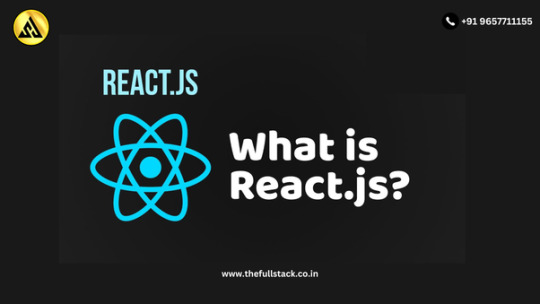
React JS is a popular JavaScript library developed by Facebook for building dynamic, high-performance user interfaces. Known for its component-based architecture, React allows developers to create reusable UI elements that make web application development faster and more efficient.
This open-source front-end library leverages a virtual DOM to boost rendering speed, making it ideal for single-page applications (SPAs). With React, developers can build responsive web apps, ensuring seamless user experiences across devices.
React is widely adopted due to its SEO-friendly rendering, cross-platform capabilities (via React Native for mobile apps), and strong community support. Trending concepts in React development include hooks for state management, Next.js for server-side rendering, and TypeScript integration for scalable codebases.
If you're looking to create modern web applications, mastering React JS is essential for any full-stack or front-end developer.
0 notes
Text
How Do You Choose the Right Tech Stack for Android App Development?
Several possibilities exist when choosing between a tech stack and tools. To give you a glimpse: the wrong choice of tech stack will result in issues in your software development performance, scalability, delivery time, and long-term maintenance. Both businesses and developers must learn what makes up a tech stack and how they can make informed choices because this knowledge will affect the final outcome's success.
So what are some of the factors on which the appropriate tech stack for Android app development depends?
Understand What a Tech Stack Includes
A tech stack refers to the set of programming languages, frameworks, libraries, tools, and technologies used to build a software application. For Android app development, the tech stack usually includes:
Programming Language: Kotlin and Java are two widely used languages to develop native Android applications. Kotlin is becoming the choice among developers when it comes to modern apps due to its concise syntax and full interoperability with Java. The language choice generally defines if we are going to build a native or cross-platform app.
Development Tools: Android Studio is Google-supported IDE, and it provides a full environment for code editing, debugging, and testing.
UI Frameworks: Jetpack Compose is the newer-native approach to Android UI designing replacing the older method based on XML layouts working with a much more dynamic and declarative approach.
Backend Technologies: This would usually depend upon requirements, and thus Node.js; Python with the Django framework; Ruby on Rails; or Java with Spring Boot would be considered.
Databases: SQLite, Firebase Realtime Database, or Room can be used for local and cloud storage.
API and Cloud Services: Third-party API integration and Google Cloud and AWS would present even more options for further enhancing the functionality and performance of the application.
Define Your App Requirements Clearly
Before you select the technology stack for development, be sure to keep your project's functional and technical requirements clear. Ask and answer the following:
What type of app is this: a simple or a complex one?
Will it have real-time features such as messaging or geolocation?
What kind of performance and scalability is demanded?
What are the security and compliance requirements?
If the application has demanding requirements such as performance, low latency, and intensive processing, native development with Kotlin might be your choice. For applications with less demanding requirements or tighter budgets, going with hybrid frameworks such as Flutter or React Native (although technically a cross-platform one) is the best choice.
Consider Development Time and Budget
Your budget and timeline are other important parameters in this regard. Some technologies may present quick development cycles, while others might just add to the complexity and therefore the cost. Kotlin, on the other hand, is very efficient but may require developers with more experience. Firebase provides several backend-as-a-service features that drastically cut down developer effort, making it perfect for startups and MVPs.
Also, developing fast should be kept balanced with maintenance in the long run. A tech stack may provide upfront rapid development at the cost of great cost later due to poor scalability.
Evaluate Community Support and Documentation
Another positive site of choosing more widely variant technologies is strong community support. Open source libraries and frequent updates, as well as well-maintained extensive documentation, can help solve any hurdle faced during the development phase. For instance, Android Studio, Kotlin, and Jetpack Compose have exceptionally large communities and high-standard documentation maintained by Google and the larger wider developer ecosystem.
Even if third parties need help saying so, the community provides even more third-party tools, plugins, auto-configuration, and standard building blocks that are used to develop your application faster.
Think Long-Term: Scalability and Maintainability
Your tech stack should support the future growth of your app. As your user base increases or your app’s features expand, your technology choices should not limit scalability. Opting for cloud-native backend solutions, modular architecture, and a maintainable codebase will help keep future updates smooth and cost-effective.
It’s also worth considering how easy it will be for a new developer to pick up and work on the project in the future. Clear documentation, consistent coding practices, and widely adopted tools make long-term maintenance easier.
Conclusion
Choosing the right tech stack for Android app development is a strategic decision that requires careful planning and analysis. By understanding your project requirements, budget, and long-term goals, you can select a set of tools and technologies that support not just development—but also growth and sustainability.
For businesses looking to build custom Android applications tailored to their unique needs, working with experienced professionals can make all the difference. Companies like Globosoft specialize in Android App Development in Ernakulam, offering end-to-end services from planning and UI design to development and deployment. With the right tech stack and a skilled team, your Android app can stand out in today’s competitive mobile landscape.
#Mobile App Development in Kochi#IOS App Development in Kochi#Android App Development in Kochi#Mobile App Development in Cochin#IOS App Development in Cochin#Mobile App Development in Ernakulam#IOS App Development in Ernakulam#Android App Development in Ernakulam
0 notes